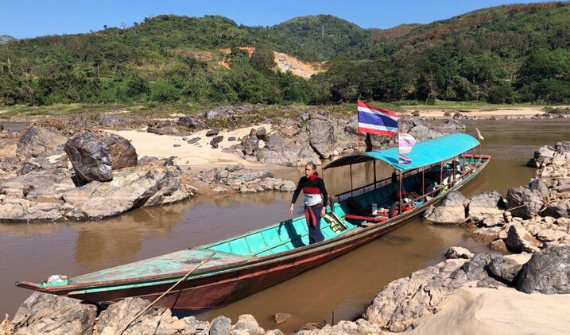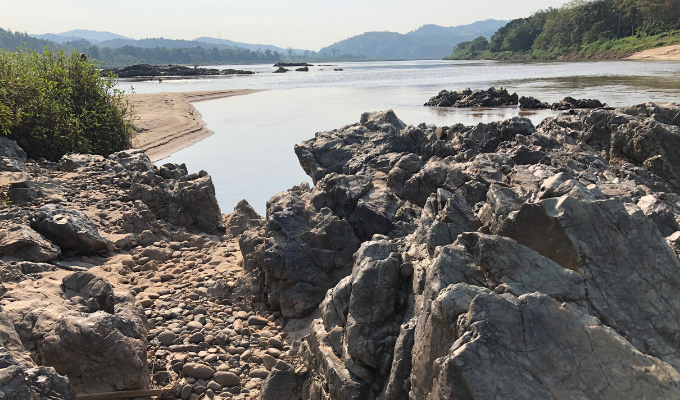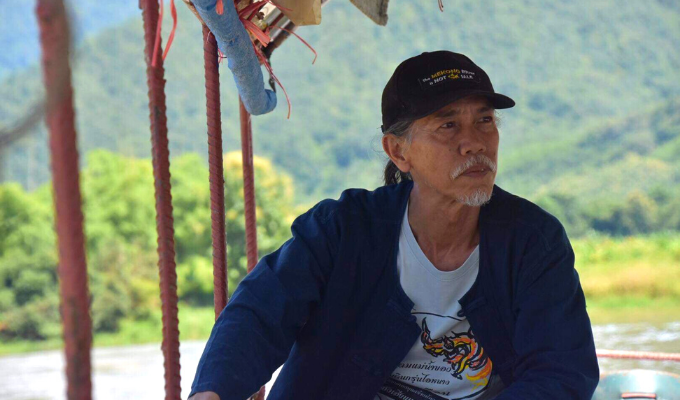By: Pai Deetes, Thailand and Myanmar Campaigns Director
In a momentous win for the Mekong River, this week the Thai Cabinet formally called for cancellation of the Lancang-Mekong Navigation Channel Improvement Project, popularly known as the Mekong “rapids-blasting” project. The cabinet decision is the culmination of decades of campaigning by Thai Mekong communities and civil society groups, aided by environmentalists, who have worked tirelessly to raise concerns over the China-led project and the future it would represent for the Mekong.
Background
The Mekong rapids-blasting project has been on government agendas for almost twenty years. In 2000, China, Myanmar, Laos and Thailand signed the Agreement on Commercial Navigation on the Lancang-Mekong River, initiating studies to examine the feasibility and impacts of the project. The project aims to remove rapids from stretches of the Mekong River through dredging and blasting, enabling year round navigation of 500-tonne freighters between southern China’s Yunnan Province to the Thai-Lao border and on to Luang Prabang in Laos. Under this plan, the Mekong would be converted into a channelized waterway for commercial navigation. The project has since been implemented in stretches of the Mekong in China, Myanmar and along the Lao border, up to the Thai border at the Golden Triangle.

But for Thai communities living along the Mekong and local organizations such as the Chiang Khong Conservation Group, the project raises grave concerns over threats to the river ecosystem, critical fish habitat and breeding grounds, and local livelihoods and culture.
A Decade of Resistance
For over ten years, the proposed channelization in Thailand was suspended by previous Thai governments, citing concerns over environmental impacts and issues of sovereignty and national security at the Thai-Lao border. However in late 2016, the project developer, China CCCC Second Harbor, initiated consultation meetings in Thailand, indicating the project had been revived. In a decision that shocked communities and environmental groups, the Thai Cabinet adopted a resolution supporting China CCCC Second Harbor’s plans for exploration and development of the project.
Following sustained local campaigning, the project took a number of twists and turns. In late 2017, Thailand’s Foreign Minister Don Pramudwina announced that China had decided to step back from its plan for rapids blasting, acknowledging that the project would hurt communities living along the river. However, during 2017-2018, consultation meetings and preparatory work on the project continued, prolonging uncertainty for local communities fighting to conserve the character and rich resources of the Mekong.
During the past three years, the Chiang Khong Conservation Group and the Thai Mekong People’s Network have dedicated their efforts to conveying their concerns to multiple actors, including Thai Parliamentary committees and national security bodies. The community campaign received important support from academics and journalists.
I recall a pivotal moment from the campaign in April 2017, providing a glimpse into what was possible. Just a few months into the ‘survey and design’, then underway by the Chinese company amid extensive protest and community actions, Niwat Roykaew of the Chiang Khong Conservation Group was invited by the provincial military commander to a meeting. I accompanied him. The commander opened the meeting by informing Niwat that it was the government’s project so no one should oppose it. But within an hour, Niwat had successfully convinced everyone in the Army meeting room.
“When we started the campaign in the early days, locals asked me how ordinary people like us could fight to protect the Mekong, as it was a regional issue involving powerful state and non-state actors,” Niwat said this week. “But this proves that we can do it, with evidence-based campaigns. At last, this project is officially cancelled. But major problems still exist for the Mekong River, with more dams in the upper reaches, and in the lower basin. We need better accountability over transboundary natural resource governance in the Mekong.”

The Mekong Under Threat
The Mekong River in Chiang Rai has already experienced severe ecological devastation in recent years due to dam construction on the river’s upper reaches in China. At least eleven dams have been completed on the Lancang or upper Mekong, with the Jinghong Dam–the closest one to the Thai border–only about 340 kilometers away. Three more dams are slated for construction in the lower reaches of the river in neighbouring Laos, including the Pak Beng dam, proposed for development by a Chinese company across the Mekong in Oudomxay, just 90 kilometers from the Thai border. Another is the Luang Prabang dam, proposed by Vietnamese and Thai developers and currently completing the Mekong River Commission’s regional Prior Consultation procedure.
The rapids blasting project is therefore part of a much larger plan for the Mekong, one that would transform the river from a life-giving watershed join to an industrial corridor where transnational corporations profit at a staggering cost to local livelihoods and biodiversity, rivaled only by the Amazon.
Victory Reinstills Hope
But this week’s decision by the Thai cabinet serves as a disruption to the reckless rush to transform and capitalize on the rich resources of the Mekong River. It provides some hope that another future is still possible – one that fully accounts for the Mekong’s vital ecological, social and cultural values – and enables peaceful cooperation among riparian governments and those who share the Mekong River Basin.
More information: Response from the Thai Mekong People’s Network Eight Provinces to the Chinese Embassy Spokesperson’s Remarks on the Media Report on China’s Impacts on the Mekong River
Featured photo: Niwat Roykaew of the Chiang Khong Conservation Group| Photo by Pai Deetes, International Rivers.

